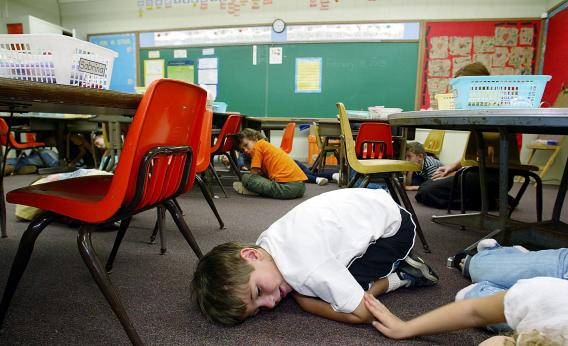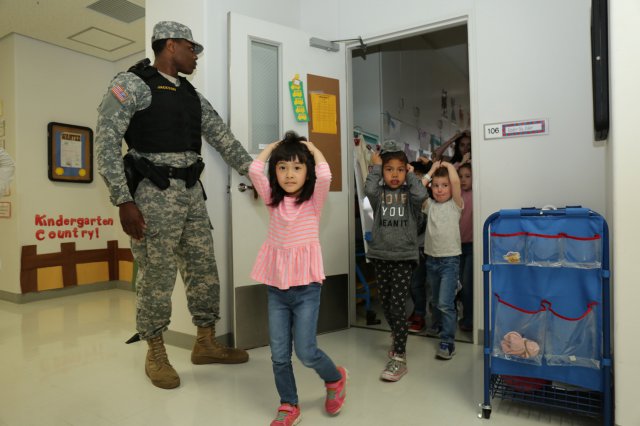Growing up, my school had all sorts of drills. As far back as I can remember we had lockdown, fire and tornado drills. Every so often we’d be marched outside to wait, then brought inside to practice covering our heads for a tornado, and then sent to the classrooms or designated areas for a lockdown.
Even from a young age, I knew we were doing these things to be safe. Sure, it was scary, and to a lot of kids I imagine it was terrifying. However, I felt safe. I was confident that, with these drills, we would at least have some idea of what to do in case of an emergency.
The drills continued in high school but once I hit college, they stopped. No one was carting us outside in case of a fire, or telling us where the safe exits were, or not to take the elevators. We’re adults and we should be able to use common sense, but if someone is running around shooting at you or a fire is hot on your heels, how many people would think rationally?
According to verywellfamily.com, back in the 1950’s and 60’s, kids regularly did bomb drills. Surely a threat of nuclear war would be more terrifying to a kid than the thought of a shooter right?
Most schools and universities have lockdown drill procedures in place and they’re required in several states. Verywellfamily.com tells us that during an active shooter drill, “Doors to classrooms are closed and locked. Students are moved to the safest part of the room, away from windows and doors, to the interior walls. Everyone drops to the floor or out of the line of vision from the door. Window shades are pulled down. Any windows in doors are covered (to prevent an intruder from seeing into the room). Classroom lights are turned off.”
 This is standard procedure in most schools that implement these drills and was standard procedure at my school too. In some schools, a teacher or other staff member acts as an intruder and will come around jiggling the handles or banging on the doors.
This is standard procedure in most schools that implement these drills and was standard procedure at my school too. In some schools, a teacher or other staff member acts as an intruder and will come around jiggling the handles or banging on the doors.
Heather Jancoski of pbs.org wrote about her school’s lockdown procedures from a staff member’s point of view, and raised quite a few good points. While most schools follow the same procedures, not many post their drills online for safety reasons. It’s understandable, but can lead to issues if another school or class would be visiting during an emergency situation.
While some schools have procedures for an incident during an event, many others may not and it could lead to some serious issues if there were to be an emergency during those times.
Another problem is language. Once you reach high school, and you’re in your second or third year, you may be familiar with the terms your school uses for drills. However, freshman may not know the terms and could get confused. Also, if you’re at another school during a drill, they may not use the same terms that you’re used to which could lead to issues.
The psychological effects of lockdown drills have been highly debated for some time. According to The Atlantic, during the 1950’s and 60’s some teachers reported that students’ artwork changed to feature mushroom clouds and sometimes the child’s own death. This brought a pervasive sense of danger into the places where kids most need to feel safe.
However, this is countered by edweek.org, from Lisa Crane, founder of ALICE.
“Parents don’t have any problem discussing an abduction and giving children quite aggressive tactics in response. What do we tell kids in stranger danger? Anything but go with the guy. Bite, kick, yell. Anything but go sit in the corner and be quiet.”
While there are negative effects to the lockdown drills, there are positive ones as well. Being underprepared for something can be worse than being prepared. If a kid doesn’t know what to do in a scary or dangerous situation, they could cause more panic and problems than one that knew what to do.
The number of schools doing lockdown drills has greatly increased over the years. In the 2013-14 school year 70 percent of schools had lockdown procedures implemented. Parents have the ability to opt out of the training for their students in Akron, Ohio, but so far, no one has done so.
Being prepared has its upsides and its downsides, but no one can disagree that we live in a society now where these kinds of drills feel almost normal. It’s a sad thought that kids are practicing drills relating to being shot almost as much as fire and tornado drills, but this is now our reality. I believe that the drills are a positive thing. They could have negative effects on kids, but overall, they need to be prepared and ready for what could happen.
Jeri Hensley
Graphic Designer

